COVID-19 Update: Wednesday, January 27
The following is the latest COVID-19 information from the state government as of 3:30 p.m. on Wednesday, January 27.
Department of Health
 The Department of Health has amended its hospital reporting order effective on January 27, 2021 to require daily reporting to the CORVENA system by 10:00 a.m. instead of the previous 8:00 a.m. deadline. The order also was amended to include as a required data field “Other categories or data fields required by the federal data reporting system (TeleTracking)” to ensure that facilities are completing all necessary information for the Health Department’s upload from CORVENA into the Teletracking system. Go here for the amendments to the order and here for a memo about these changes.
The Department of Health has amended its hospital reporting order effective on January 27, 2021 to require daily reporting to the CORVENA system by 10:00 a.m. instead of the previous 8:00 a.m. deadline. The order also was amended to include as a required data field “Other categories or data fields required by the federal data reporting system (TeleTracking)” to ensure that facilities are completing all necessary information for the Health Department’s upload from CORVENA into the Teletracking system. Go here for the amendments to the order and here for a memo about these changes.- The Department of Health has posted slides that were presented during a recent meeting of the Health Care Coalition containing information about vaccine strategies for long-term-care facilities.
- The Department and Health and Department of Human Services has posted a COVID-19 vaccine toolkit for long-term and congregate care facilities.
Department of Health – by the numbers
- The number of new daily COVID-19 cases has remained steady in recent days – well below November and December highs but more than twice the daily highs recorded in the spring.
- The daily death toll remains very high and the state-wide total rose past 21,000 today.
- For the week from January 15 through January 21 the state’s overall COVID-19 test positivity rate fell to 10.5 percent; it was 12.7 percent the week before that. This marked the fifth consecutive week the rate fell.
- The numbers of Pennsylvanians hospitalized with COVID-19, in hospital ICUs, and on ventilators has remained steady in recent days.
- More than 22,000 health care workers in the state have contracted COVID-19.
- More than 74,000 long-term-care facility residents and employees have contracted COVID-19 in 1533 facilities in all 67 Pennsylvania counties.
- Currently, 18 percent of adult ICU beds in the state are unoccupied, as are 15 percent of medical/surgical beds, 14 percent of pediatric ICU beds, 27 percent of pediatric beds, and 33 percent of airborne isolation units. All of these numbers are down in recent days.
- In its “Reduction of Elective Procedures” dashboard that tracks the criteria the state is using to determine whether to order hospitals to reduce or eliminate elective procedures to ensure their ability to handle possible influxes of COVID-19 patients, the state continues to flag a growing staffing shortage in hospitals in the state’s Keystone health care coalition region (Adams, Bedford, Blair, Centre, Cumberland, Dauphin, Franklin, Fulton, Huntingdon, Juniata, Lancaster, Lebanon, Mifflin, Perry, Snyder, and York counties). In that region, 41 percent of the region’s hospitals anticipate a staffing shortage in the coming week – more than the 33 percent level that the state believes poses a potential problem. The overall situation in the Keystone region, however, has not reached a point where the state would direct hospitals in this region to reduce or eliminate their elective surgeries. This situation has remained the same for the past three weeks.
 As of January 27 the state’s vaccine dashboard shows that 491,000 Pennsylvanians have received their first dose of a COVID-19 vaccine and nearly 140,000 have received both doses of vaccine.
As of January 27 the state’s vaccine dashboard shows that 491,000 Pennsylvanians have received their first dose of a COVID-19 vaccine and nearly 140,000 have received both doses of vaccine.- The vaccine dashboard shows vaccine totals by county both on a map and in lists.
- A spreadsheet of facilities that have received vaccines can be found here.
- As ordered by the Department of Health in late 2020, health care institutions – hospitals, FQHCs, and others – must reserve 10 percent of the doses of COVID-19 vaccines they received for non-hospital health care providers. The vaccine page on the department’s web site features a map of locations where non-hospital providers can obtain vaccines. The map includes contact information for non-hospital providers identifying whom they can contact to schedule their vaccines. State officials say more sites will be added to this map as more doses of COVID-19 vaccine become available.
Department of Human Services
DHS has issued a new Medical Assistance Bulletin explaining its decision to increase the Medical Assistance program fee schedule rate for the administration of the COVID-19 vaccine from its current rate to the rate paid by Medicare. This change is effective December 1, 2020 and DHS will reprocess claims submitted between December 1, 2020 and the issuance of this bulletin. Providers do not need to resubmit the claims.
Department of State
Under current waivers, pharmacy interns may administer vaccinations, including COVID-19 vaccinations, under the direct supervision of a licensed pharmacist. In anticipation of the possibility that some pharmacies may have more pharmacy interns capable of administering COVID-19 vaccinations than they have licensed pharmacists capable of providing the requisite direct supervision, the Department of State has temporarily broadened the scope of “eligible supervisors” to include other licensed and trained health care professionals whose current scope of practice permits them to immunize, thereby making it possible for pharmacy interns to administer COVID-19 vaccinations under the direct, immediate, and personal supervision of a pharmacist or certain other health care practitioners. Specifically, appropriate supervisors pursuant to this waiver include other licensed health care professionals who are trained in the administration of immunizations and emergency care of patients: physicians, physician assistants, and nurse-midwives licensed by the State Boards of Medicine and Osteopathic Medicine, registered nurses, and certified registered nurse practitioners licensed by the State Board of Nursing. This waiver applies solely to COVID-19 vaccines and shall be valid for the duration of the governor’s disaster emergency declaration plus an additional 90 days thereafter, unless terminated sooner. Learn more about the waiver here.
General Assembly
- House Bill 55 was approved by the House of Representatives on Wednesday by a vote of 116-86. This legislation would amend Pennsylvania’s constitution to limit gubernatorial emergency declarations to no more than 21 days unless the General Assembly agrees to extend it in whole or part. In addition, once a disaster emergency expires, the governor would not be able to declare a new one based on “the same or substantially similar facts” without approval from the General Assembly. Further, the bill would clarify that the General Assembly, through a concurrent resolution, could vote to terminate a disaster declaration without having to present it to the governor. The bill will now go to the Senate for concurrence. If the Senate approves the bill before mid-February, it will be able to be placed on the May 18 primary ballot for voter consideration.
- Senate Bill 109 was approved by the Senate Wednesday afternoon by a vote of 48-0 and sent to the House of Representatives for consideration. SB 109, a $912 million COVID-19 relief package, provides funding to support restaurants, schools, employers, tenants, and landlords as they continue to confront the financial challenges caused by COVID-19. The measure provides $569.8 million for rental and utility assistance; $197 million for education programs; and $145 million to support the hospitality industry. The funds appropriated by the bill are provided through federal COVID-19 stimulus money. The legislation does not designate any funds for health care. It could be approved by the House as early as next week.
Around the State
- Forest County, Pennsylvania has experienced more COVID-19 cases in the past two weeks than it had since the start of the pandemic until that point, according to the Philadelphia Inquirer.
- The Inquirer also reports that the city of Philadelphia has terminated its relationship with Philly Fighting COVID, which ran the city’s largest mass vaccination site and operated a vaccine preregistration website.
- Westmoreland County, a major COVID-19 hotspot in recent months, has seen its new case numbers fall to their lowest level since October, according to the Pittsburgh Tribune-Review.
- Philadelphia hospitals have begun giving COVID-19 vaccines to their patients, WHYY radio reports.
Resources to Consult
Pennsylvania Department of Human Services
Pennsylvania Department of Health
Centers for Disease Control and Prevention
 Department of Health – by the numbers
Department of Health – by the numbers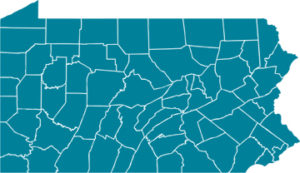 Around the State
Around the State Office of the Governor/Vaccination Plan
Office of the Governor/Vaccination Plan President-elect Biden has nominated Pennsylvania Department of Health Secretary Rachel Levine to become assistant secretary of the U.S. Department of Health and Human Services.
President-elect Biden has nominated Pennsylvania Department of Health Secretary Rachel Levine to become assistant secretary of the U.S. Department of Health and Human Services. Department of Human Services
Department of Human Services Pennsylvania’s Department of State has issued
Pennsylvania’s Department of State has issued  The report breaks down the additional costs and lost revenue as follows:
The report breaks down the additional costs and lost revenue as follows: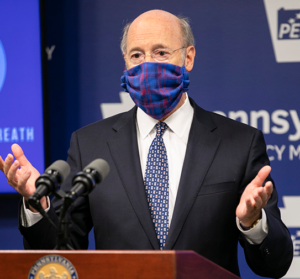 The Wolf Administration
The Wolf Administration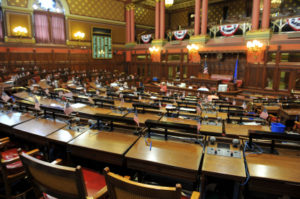 General Assembly
General Assembly  Provider Relief Fund
Provider Relief Fund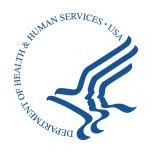 Department of Health and Human Services
Department of Health and Human Services Centers for Disease Control and Prevention
Centers for Disease Control and Prevention The Department of Health has
The Department of Health has  At issue are financial reporting requirements that at first directed hospitals to estimate their anticipated revenue losses and extra expenses associated with the COVID-19 pandemic in one way and then shifted to a new approach. The first grant distribution was based on the original reporting requirements, and now, hospitals fear that the change in reporting requirements could leave them vulnerable to a demand that they return some, much, or all of that grant money.
At issue are financial reporting requirements that at first directed hospitals to estimate their anticipated revenue losses and extra expenses associated with the COVID-19 pandemic in one way and then shifted to a new approach. The first grant distribution was based on the original reporting requirements, and now, hospitals fear that the change in reporting requirements could leave them vulnerable to a demand that they return some, much, or all of that grant money.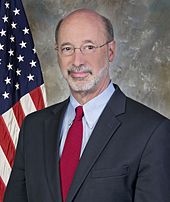 In a news conference held Thursday afternoon from his home in York, where he is under quarantine because he was diagnosed with COVID-19, Governor Wolf announced new state mitigation efforts to attempt to stem the current surge of cases in the state. Joining Governor Wolf for the news conference was Department of Health Secretary Rachel Levine, who also is under quarantine because she recently was exposed to people who have tested positive for the disease. (Members of the governor’s staff and security team have tested positive for COVID-19.)
In a news conference held Thursday afternoon from his home in York, where he is under quarantine because he was diagnosed with COVID-19, Governor Wolf announced new state mitigation efforts to attempt to stem the current surge of cases in the state. Joining Governor Wolf for the news conference was Department of Health Secretary Rachel Levine, who also is under quarantine because she recently was exposed to people who have tested positive for the disease. (Members of the governor’s staff and security team have tested positive for COVID-19.) CMS has updated its
CMS has updated its